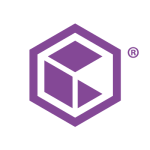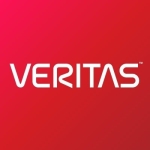What is our primary use case?
We have typical use cases for it: resilience and disaster recovery. They have some other functionalities that their software can help account for, but we are using its disaster recovery and resilience, which are kind of its core functions.
How has it helped my organization?
I have used it in many scenarios, including a temporary data center move in Europe. I had to move all my resources from Belgium to Budapest, and then back, once our data center was physically moved across town in Belgium. I am not sure how this would have been accomplished without Zerto.
With Zerto, the move was incredibly easy to do. It was click of a button, wait 10 minutes, and everything is up, then turn on the data center. Once the data center was relocated and rebuilt, click a button, and wait a few minutes, then it now runs back to the original site. It was that easy. The data center move part was obviously the hard part, as it should have been, not keeping the applications going at a secondary site during that time. That was a pretty big success with Zerto and our largest use case for it: a data center move.
We are currently using Zerto with some more modern databases, application servers, and tertiary systems to provide redundancy and resiliency to our crown jewel application. We have been doing a lot of DR testing scenarios, part of which relies on Zerto and part of which are other mechanisms. In general, when we have done our recent testing using the Zerto portions, once we say, "Okay, we are doing this now," it is taking less than three minutes on average for the systems to be fully back online at the new location once we start. That includes booting all the Windows VMs up. The actual VMs were ready to go and functional within 30 seconds. However, some of them are larger Windows machines and those take their time to boot, getting services online and connected to everything. So, the Zerto part was literally under a minute in these test scenarios to clear a total failure and initiate our disaster recovery function.
What is most valuable?
The near real-time replication is probably the biggest value of this solution. There are some other ways to get that done, but this seemed to be the easiest and cheapest way to get near real-time replication. In most instances, our RPO is about five seconds, which is pretty aggressive and not that taxing to achieve with Zerto.
The ease of use is pretty high. It really isn't very complex to use. They did a good job with the UI, and it is fairly obvious where you need to click, what you need to click, and what you are doing. There are good confirmation screens, so you are not going to accidentally take down or move loads that you are not trying to. It is fairly user-friendly, easy to use, and you don't need to read a manual for three weeks to start using it.
What needs improvement?
Previously, our main need for Zerto was actually database cluster servers running fairly old software, SQL 2008 on Microsoft Windows clusters with none of the advanced SQL clustering functionality. Our environment is all virtualized. The way we had to present the storage to our host machines in VMware was via raw device mapping (RDM). Technically, Zerto can do that, but not very well. We have gone to some different methods for our databases, which don't actually use or rely on Zerto because the solution wasn't that functional with RDMs. This is an old, antiquated technology that we are currently moving off of. I can't really blame them, but it definitely is something they thought they could do better than they could in practice.
They had a bug recently that has come up and caused some issues. They currently have a bug in their production versions that prevents their product from functioning in some scenarios, and we have hit a few of those scenarios. Aside from that, when it is not hitting a bug, and if we're not trying to use it for our old-style, old-school databases, it functions incredibly well.
For how long have I used the solution?
I had an early Zerto certification from their first ZertoCON conference. I received a certification from them in May 2016, so I have been using it for at least five years. I would have been one of the initial users at my company, so they have been using Zerto for at least five years.
What do I think about the stability of the solution?
Stability is reasonably good, but I wouldn't say excellent. We have had some odd issues with vRAs, which are little VMs that hang off of every VMware host that we have. Those aren't consistent, but they do occasionally happen. As I referenced earlier, there is a bug in the system right now that can affect my VM recovery. It tries to put too many requests into VMware at once, and VMware will timeout those requests, which causes Zerto to fail. That has not been constant throughout our use of Zerto. It is usually a flawless operation, and that is why I can still say good to very good, even though they currently have a bug. It is very uncommon for them to have anything that affects the platform negatively.
What do I think about the scalability of the solution?
Scalability hasn't seemed to be an issue. We started out with two sites connected in the same city. Now, we are running the connected infrastructure of Zerto on three different continents. Some of those continents have various cities and/or countries involved. That has not given us an issue with scalability at all. It seems to be fairly flexible in adding whatever you need it to do. As long as you have the bandwidth capability and reasonable latency between sites, Zerto seems to work quite well.
10 to 12 people are actively in Zerto, or even know what it is besides a word that an IT guy uses to say, "It is okay." Generally speaking, their titles would be network administrator, network engineer, or senior network engineer.
For all our sites, most of our IT staff wouldn't be allowed to mess with it. Because if you hit the wrong buttons in Zerto, you can take down an application. So, there is a fairly small list of folks who would be able to get into this. Only a few sites can actually access the management console. They are located in Louisville, Kentucky; Belgium, Budapest, and Melbourne, Australia.
How are customer service and technical support?
I would rate the technical support as eight out of 10. They know the product very well. I have had a couple misfires at times, but they are pretty good in general.
One of the issues that we had early on was regarding some of the storage functionality, especially regarding RDMs. I had contacts and conferences with the Zerto development staff, whom I believe are in Israel, about the ability to ignore disks in Zerto for my virtual protection groups (VPGs). What they can do currently is mark them as temporary disks, then they will do a one-time copy, and that is it. However, some of those temporary disks are extremely large, so it wasn't a great answer for us. I would like the ability to ignore disks instead of still trying to replicate every disk on a VM as being protected by Zerto. The biggest thing that they can do right now is improve their product. This would have been much better a few years ago rather than now. Now, we are finding other ways around it.
Which solution did I use previously and why did I switch?
We previously had some storage-based replication, which we are currently still using, but nothing that really fits the same mold that Zerto does.
Zerto's database storage replication is not good with RDMs. We are still doing storage-based replication for those.
Our new schematic is self-replicating. It doesn't require any type of Zerto replication or storage-based replication, so that was a need removed.
How was the initial setup?
It was quite straightforward. You just install the software, point it to your vCenter instance, and then deploy your vRAs, which is done automatically. Updates have been the same, e.g., quite straightforward. The only challenge with updates is if you have multiple Zerto instances that are linked to each other. To be able to replicate to different sites, they can't be out more than a half a version. For instance, I am running version 8.5 on all my sites that are currently running Zerto, but I couldn't be running those if I was running 7.5 anywhere. That would have been too far out of appliance. That is more of a minor challenge than a problem. I don't consider that to be a shortcoming, but it is well-documented, easy to figure out, and also pretty straightforward.
The first site was also kind of a learning experience. That deployment took less than a day from, "Okay, let's start the download," to, "Look, it's doing something," and you need to stand up two sites to go from site A to site B. That took less than a day to get them up and functional in at least some capacity, protecting some machines and workloads.
What about the implementation team?
We generally try to perform all functions in-house instead of bringing in a third-party or contractor service to help for deployments. That was the model that we followed. We read the documentation, had Zerto's number handy in case we ran into issues, and deployed it ourselves.
There are probably only five of us (out of the 12 who have access) needed for deployment maintenance. Their titles would be network administrator, network engineer, or senior network engineer.
It is fairly simple to deploy and maintain. We do product upgrades every six to 12 months.
What was our ROI?
We relocated all our virtual machines from Belgium to Budapest, Hungary. I am not sure how we would have done it without Zerto, because we were able to keep the data in sync. We would have needed to have a lot more expensive storage products online at the time that could have kept that replication. From what I have seen from other methods, that would have required a much higher amount of bandwidth as well, then the cost would have been extreme. The mechanisms available to us with a storage space replication would have been more labor-intensive and prone to error. It was much easier and more successful with Zerto than other ways at our disposal.
Zerto has reduced the time involved that staff would spend on a data recovery operation. We don't have dedicated resources for disaster recovery. It is a scenario where, "Everybody, stop what you are doing. This is what we are all working on right now." We haven't had a reduction in headcount because of Zerto, but we have reduced the use of existing headcount.
DR management is less time-intensive and resource intensive. Therefore, there are less staff hours involved because of Zerto, but not less headcount.
Zerto has helped to reduce downtime in any situation. The easiest one to point out was the data center move. It took minutes to move an application to a different country, then minutes once again to move it back. That would have been hours at best to days with the other solutions that we had at our disposal.
What's my experience with pricing, setup cost, and licensing?
Even though we are on-prem, the licensing model was changed to more of a cloud licensing model. We pay for blocks of protected machines. You need to buy a block for use and pay for maintenance annually based on the block size that you have.
When they changed their licensing model, pricing might have gotten a little more expensive for some use cases, but it has been pretty straightforward.
Which other solutions did I evaluate?
It is a little easier to use than Cohesity or Rubrik, but we haven't really had another DR platform in place.
At the time of evaluation, we did not have a good snapshot-based backup platform, such as Cohesity and Rubrik, so that was not much of an option. The only thing we were aware of and investigating was VMware Site Recovery Manager (SRM), which is VMware's built-in system, SRM, and played around with it. In comparison to Zerto at that time, Site Recovery Manager is a nightmare. Zerto was definitely the easy button when we were last investigating solutions. Zerto was better in terms of ease of use, visibility, and costs. Frankly, these are all the metrics that we looked at, and Zerto worked better than SRM as well as it was easier and cheaper.
What other advice do I have?
Do a PoC. Test it along with other solutions that you are looking at and make a decision. Our decision was easy, and it was Zerto.
We are changing the infrastructure supporting our primary crown jewel application and will be utilizing Zerto more heavily in that. We are expanding the amount of application servers as well as adding some database servers that Zerto will be responsible for, and currently aren't. We are expanding using Zerto because we are expanding the assets for our application. That is happening currently. We have been working on that switchover for the last 12 months. We are getting close to actually deploying all those changes in production, so that is a fairly recent and ongoing task.
We haven't had to deal with a data recovery situation due to ransomware or other causes. We have a combination of luck and some pretty good security measures in place to where we haven't had an impactful ransomware event, CryptoLocker event, etc. In that event, I don't think Zerto would probably be the first thing that we would try to utilize. We have some pretty good backup mechanisms as well. We would probably look to those first to restore from backups. We have a fairly aggressive backup schedule with many servers backed up once an hour or more, which contain critical data. That is probably where we would go first.
There is a need to have both DR and backup in one solution, but it is not important. There are better backup methodologies that we use and they cover more use cases.
We are not utilizing any cloud resources for DR at this point. Our applications are very CPU and memory intensive, which becomes very expensive to run in the cloud.
We have other mechanisms for long-term retention.
Biggest lesson learnt: Disaster recovery doesn't have to be the biggest challenge in your organization.
I would rate Zerto as eight out of 10. The rating may not sound great, but it is pretty high for me.
Which deployment model are you using for this solution?
On-premises
Disclosure: PeerSpot contacted the reviewer to collect the review and to validate authenticity. The reviewer was referred by the vendor, but the review is not subject to editing or approval by the vendor.



















